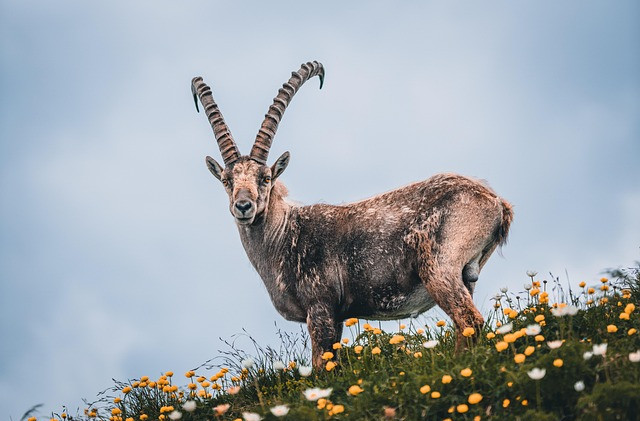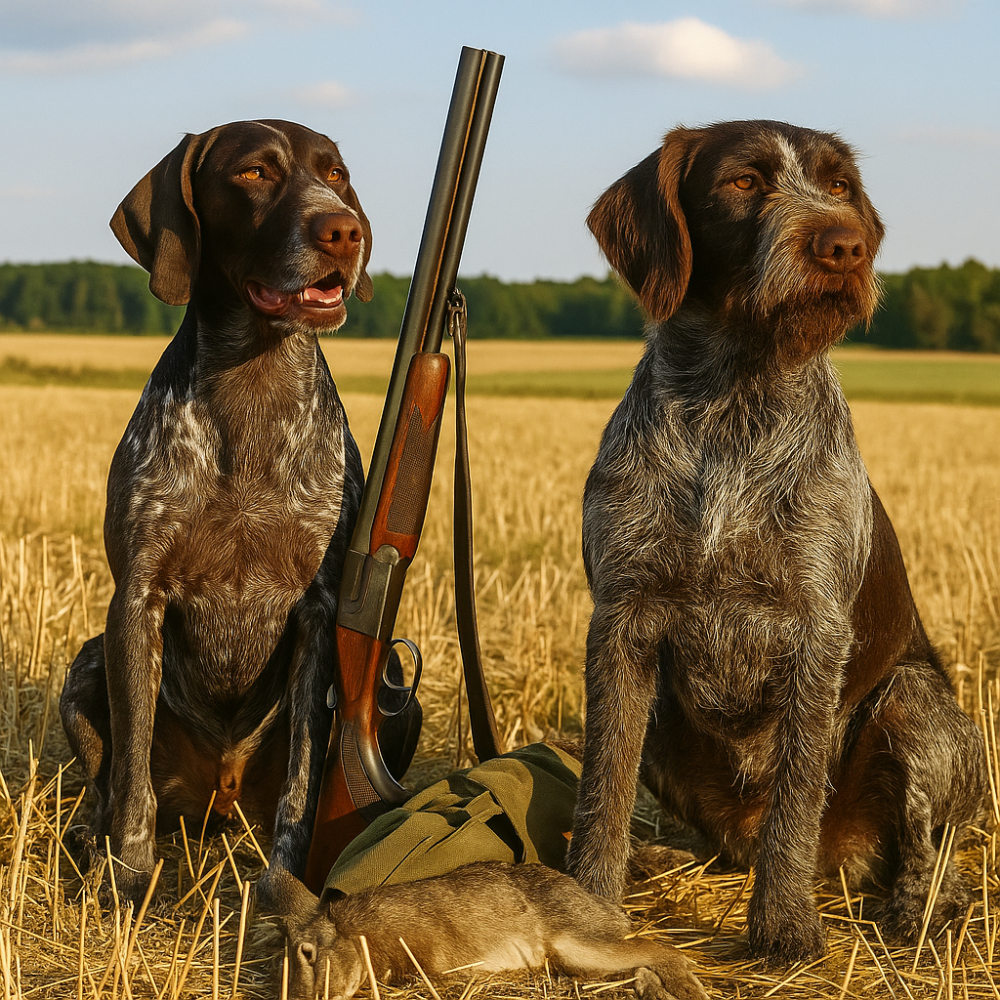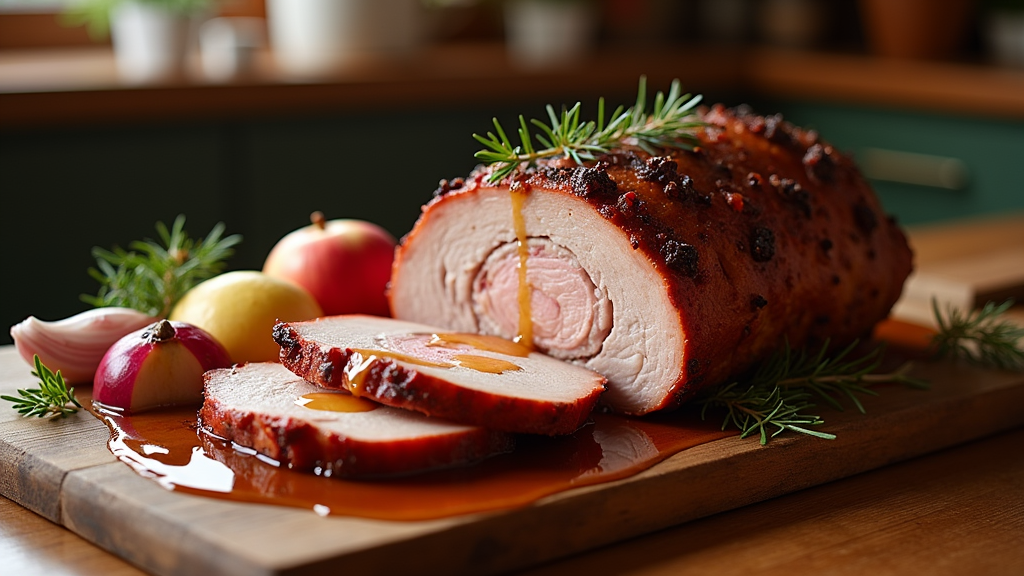Familiar with the Alpine ibex? Wondering about hunting this wild ungulate? Here’s all you need to know.
Before the hunt, be prepared. During your hunt, expect a thrilling experience. Successful hunting reaps rewards. Get the insight you need now!
Introduction
What is an Alpine Ibex?
The Alpine Ibex is a wild goat with legendary curved horns. These majestic horns can reach up to one meter in length, and are used by males for territorial disputes and mating. They have adapted to the hostile alpine environment with their thick fur and specialized hooves. Herbivorous, they feed on grasses, herbs, and leaves found in their mountain habitats.
The Alpine Ibex is famous for its ability to climb rocky surfaces. Its hooves have soft pads for superior traction, enabling them to access food others cannot. In the 19th century, they faced near extinction due to hunting and loss of habitat. Thankfully, conservation efforts have helped them make a successful recovery. Now, they inhabit their native alpine habitats in Europe’s majestic mountain ranges – a true symbol of strength and agility.
Where do Alpine Ibex live?

The Alpine Ibex is an amazing mountain-dwelling species. Specialized hooves and impressive agility help them survive the challenging terrain of the European Alps.
They roam rocky slopes and steep cliffs. Their adaptation skills help them navigate treacherous terrain with ease. They use their hooves like sturdy crampons. This lets them reach high elevations and access vegetation other grazers can’t.
The Alpine Ibex’s habitat is special. They climb near-vertical rock faces. It’s awe-inspiring to watch their nimble movements on seemingly impassable walls of stone.
The Alpine Ibex almost went extinct due to uncontrolled hunting. Conservation efforts saved them in the early 20th century. Now, they symbolize conservation success. Researchers and nature lovers are captivated by their remarkable lives and habitat choice.
Alpine Ibex have amazing tastes. Everything from grass to rocks is fair game! They’ve mastered finding the perfect crunch.
What do Alpine Ibex eat?
Alpine Ibex are renowned for their agility and horns. They mostly feed on vegetation such as grasses, shrubs, leaves, and even tree barks. Their sharp hooves help them to reach plants growing on steep slopes.
These mountain goats drink from streams and small water bodies found at high altitudes. During summer when food is abundant, they graze in alpine meadows. Astonishingly, they also do “geophagy,” eating soil or rocks with essential minerals.
Furthermore, they have been seen doing something called “kimchi foraging.” In this rare behavior, ibex target patches of decaying kimchi left by hikers in the Swiss Alps. The salty and spicy cabbage dish gives them extra nutrients when food sources are scarce.
Alpine Ibex are like the James Bond of mountain goats – they climb cliffs and dodge tricky disguises!
How do Alpine Ibex behave?

Alpine Ibex, the king of mountains, display interesting behaviors. They are skilled climbers, navigating rocky terrains with their hooves. Plus, these ibexes are social animals, forming herds for safety and support.
In the herd, a hierarchy is present. Dominant males occupy the top spots, showing intimidating behavior like posturing and horn clashes. This hierarchy ensures resources are fairly shared.
These ibexes are flexible eaters. In summer they prefer grass, but in winter they browse on shrubs and bark. This helps them survive in hard environments where food is scarce.
Another unique trait of ibexes is their climbing abilities. They climb steep slopes with ease, using their hooves and horns to maintain balance.
Remember, if you spot an Alpine Ibex in its habitat, stay back and observe silently. Avoid startling them with sudden movements or loud noises. Appreciate watching them interact with each other and their environment.
What is the history of Alpine Ibex hunting?
Alpine Ibex hunting has a long history, captivating hunters and nature lovers alike. This tradition has been passed through generations, offering each hunt a unique experience. Hunting these ibexes is an important part of the cultural and historical fabric of regions where they live. It was once a way to test skill and bravery, as well as provide food for communities. Now, it’s a recreational activity for locals and tourists.
Recently, efforts have been made to sustain Alpine Ibex populations through ethical hunting practices and conservation initiatives. Regulations are in place to ensure responsible hunting of these majestic creatures.
One story stands out among Alpine Ibex hunting tales. In the early 20th century, a hunter embarked on a quest for an elusive trophy ibex. After days of tracking and planning, the prey was spotted at a daring altitude. The chase was thrilling – emotionally and physically. In the end, the hunter managed to bring down the ibex with accuracy, leaving a mark in the folklore of Alpine Ibex hunting.
Alpine Ibex hunting still excites people from all walks of life. Its history is filled with tales of courage, resilience, and respect for nature. We must ensure that this ancient practice continues in harmony with conservation measures for future generations to appreciate. Ready to take on the challenge? Just remember, even the ibexes can’t escape your witty humor!
How can I hunt an Alpine Ibex?
Do you want to hunt an Alpine Ibex? Here’s a guide to help you get started!
- Research: Learn the habitat and behavior of the Ibex. This will improve your hunt.
- Gear: Make sure you have the right gear – camouflage, firearms/bows and optics.
- Timing: Go hunting during the rutting season or winter; Ibex are most active then.
- Scouting: Look for tracks, droppings, or bedding areas to find potential targets.
- Stalk and Shoot: Move slowly and take precise shots within your range.
The Ibex can climb steep mountains. So, remember to be safe and follow local regulations.
What are the challenges of Alpine Ibex hunting?
Alpine Ibex hunting offers plenty of thrills for the experienced hunter. But, the rugged and tricky terrain these creatures live in poses a huge challenge. Climbing steep slopes and skirting around rocky cliffs needs lots of strength and stamina. Plus, the Ibex’s sharp hearing and smell make it hard to get close without them noticing. They’re also really good at blending into their environment, which adds to the difficulty.
Weather conditions in the high altitude areas where Ibex live can change suddenly. This tests a hunter’s perseverance and makes it tough to hunt them. And, their sharp senses and agility make it hard even for experts to outwit them.
There’s also the issue of limited hunting season in some regions. To safeguard conservation efforts, hunting is allowed at certain times only. This puts a lot of pressure on hunters who have to plan their trips within tight schedules.
To be successful, Alpine Ibex hunters must be determined and possess the right skills. They should also equip themselves with the right gear for the mountains, while causing no damage to their surroundings.
Plus, there’s the emotional aspect. The fear of losing a rare chance fuels adrenaline-filled journeys across stunning landscapes. This combo of physical and mental challenges, along with the desire to be part of nature, drives hunters to take up this thrilling pursuit. So, go ahead, and enjoy the amazing rewards that come with Alpine Ibex hunting.
What are the benefits of Alpine Ibex hunting?
Alpine Ibex hunting provides a thrilling experience in the mountains! It allows you to test your skills, patience, and precision. You can connect with nature and enjoy the beauty of the alpine environment. Plus, it contributes to wildlife management efforts. Successful hunts give you a sense of accomplishment and delicious game meat.
But, it’s important to follow ethical practices like getting the necessary permits and respecting local regulations. Experienced guides are also important for safety and helping you understand the ibex behavior and habitat.
To show the impact of an Alpine Ibex hunt, consider John’s story. He was out in treacherous terrain when he spotted an enormous male ibex. With bated breath, he aimed and fired a perfect shot. This left him with a feeling of pride, knowing he achieved something few others can.
Risks? Beware being outsmarted by an ibex with superior survival instincts!
What are the risks of Alpine Ibex hunting?
Alpine Ibex hunting comes with risks; understanding them is key. Risks include:
- 1. Physical danger: Climb steep mountains and navigate treacherous terrain.
- 2. Weather conditions: Wild weather in the Alps can make hunting hazardous.
- 3. Wildlife encounters: Unexpected wildlife can lead to dangerous situations.
- 4. Accidental injuries: Falls or being struck by falling rocks are risks.
- 5. Legal complications: Obtain permits and licenses to avoid penalties.
- 6. Ethical considerations: Conservation efforts and animal welfare.
Mitigate risks by preparing physically, watching the weather, training, and carrying essential equipment. Research local laws and adhere to regulations for ethical hunting. To make the most of your experience, channel your inner mountain goat and pray you don’t become the hunted!
How can I make the most of my Alpine Ibex hunting experience?
Want to take your Alpine Ibex hunting up a notch? Here’s what to consider:
- Be prepared – get the gear and knowledge you need.
- Learn ibex behavior.
- Pay attention to the weather.
- Get the right equipment.
More tips to improve your hunt:
- – Ask locals for advice.
- – Look for the best hunting grounds.
- – Master your stealth skills.
Alpine Ibex Hunting Facts:
- ✅ Ibex hunting is a classic mountain game hunting experience that requires spot-and-stalk techniques.
- ✅ Ibex can be found in various mountain ranges, such as the Pyrenees, the Alps, the Caucasus, the Altai, the Pamirs, and even in exotic countries like the USA.
- ✅ Ibex hunting in their natural habitat can be relatively affordable compared to other species like argali or markhor.
- ✅ Ibex hunts in Tajikistan offer great value, providing excellent hunting experience and trophy opportunities.
- ✅ Many outfitters that offer ibex hunts participate in community based conservation programs to preserve nature and sustain local populations.
FAQs about Alpine Ibex Hunting
How much does it cost to hunt alpine ibex in Switzerland?
The cost of hunting alpine ibex in Switzerland can vary depending on the specific location, outfitter, and package options. It typically ranges from several thousand to tens of thousands of dollars.
Can you hunt ibex in Austria?
Yes, ibex hunting is permitted in certain regions of Austria. However, strict regulations and quotas are in place to ensure the conservation of the species. Interested hunters must obtain the necessary permits and licenses.
How much does it cost to hunt ibex in Mongolia?
The cost of hunting ibex in Mongolia can vary significantly based on factors like the hunting area, trophy fees, and services provided by outfitters. It could range from several thousand to tens of thousands of dollars.
What does it cost to hunt ibex in Spain?
Hunting ibex in Spain can cost anywhere from a few thousand to tens of thousands of dollars. The price depends on factors such as the region, the trophy size, the services offered, and the outfitter’s pricing.
Are there ibex in Germany?
Yes, there are ibex populations in Germany. The Alpine ibex (Alpensteinbock) can be found in certain regions of the Bavarian Alps, reintroduced after facing extinction. However, their numbers are limited and strictly managed.
Where is the cheapest place to hunt ibex?
The cost of hunting ibex varies from country to country and even within regions. Central Asian countries like Kyrgyzstan and Tajikistan often offer more affordable options compared to European destinations.
Can you eat an ibex?
Yes, ibex meat is edible, and it has been consumed by certain cultures for centuries. However, hunting and consuming ibex may be subject to local laws and regulations, particularly in protected areas.
What is the largest animal in Germany?
The largest animal in Germany is the European bison, also known as the wisent (Bison bonasus). They are native to the region and are known for their impressive size and strength.
What is the German name for ibex?
The German name for ibex is “Steinbock.” It literally translates to “stone buck” or “rock buck,” which refers to their habitat in the rocky, mountainous areas.




Leave a Reply